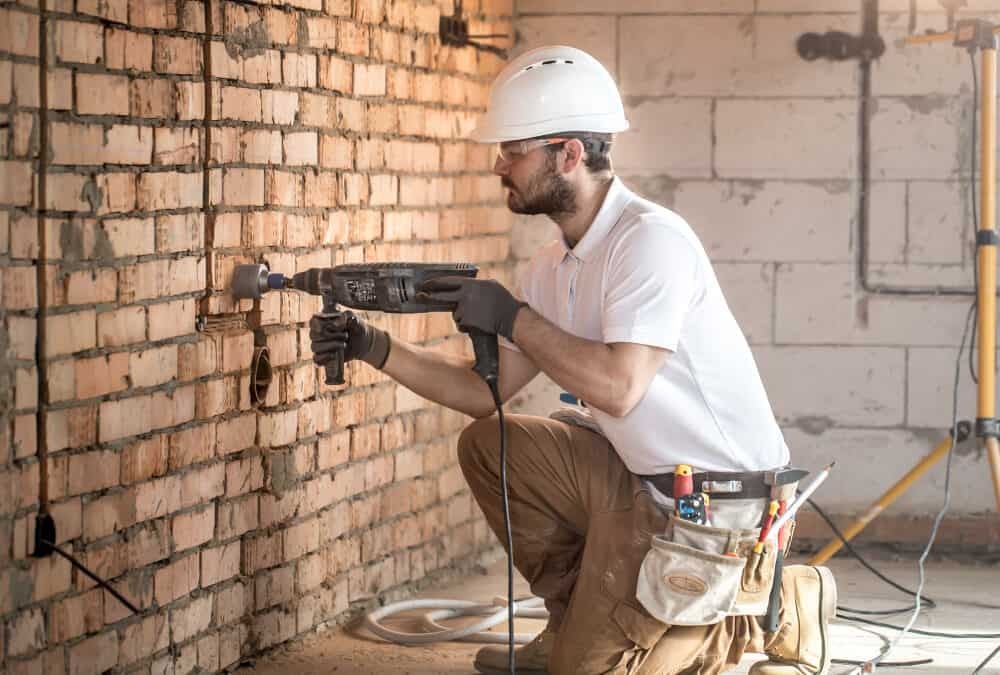When it comes to addressing foundational issues in buildings, piering is one of the most reliable solutions available. Piering, also known as underpinning, is a structural repair method used to stabilize and strengthen the foundation of a building that has settled or shifted due to soil movement, water damage, or other contributing factors. This guide will help you learn about piering foundation techniques for stabilizing structures, explore how they work, and why they are beneficial in both residential and commercial construction.
What Is Piering?
Piering is a technique for repairing foundations that entails pushing concrete or steel pipe piers into the earth beneath a building until they reach bedrock or stable soil. These piers then act as supports that redistribute the building’s weight, effectively lifting and stabilizing the foundation.
This method is commonly used when a structure shows signs of foundation settlement. These signs include cracks in walls or ceilings, uneven floors, sticking doors or windows, or visible sinking of the foundation itself. Piering offers a long-term solution by bypassing the unstable upper layers of soil and anchoring the foundation into stronger strata.
How Piering Works?
The piering process begins with a structural assessment to determine the extent of the damage and the appropriate number and placement of piers. Once the plan is in place, technicians excavate around the foundation and install piers beneath the footings.
There are several types of piers used in foundation repair, but the two most common are:
- Push Piers: These are steel piers driven into the ground using the weight of the structure. They’re ideal for lighter structures or those with minimal access to heavy machinery.
- Helical Piers: These have screw-like threads that allow them to be twisted into the soil like a corkscrew. They’re used in softer soils and allow for more controlled installation.
After installation, hydraulic jacks are used to lift the foundation back to its original position. The piers then hold the structure in place, preventing further movement and providing long-term stability.
Benefits Of Piering
Choosing to learn about piering foundation techniques for stabilizing structures can save homeowners and property managers from more extensive and costly damage in the future. Here are the major advantages of piering:
Long-Term Stability
Piering directly addresses the root cause of foundation settlement—unstable soil. By extending the support system down to more reliable layers, piering offers a permanent fix rather than a temporary patch. This long-lasting stability can add years to the life of a structure.
Minimal Disruption
Unlike full foundation replacements or extensive excavation, piering is relatively non-invasive. The process usually requires small, targeted excavations and can often be completed without the need to vacate the property. This is a significant benefit for homeowners and businesses alike.
Restored Property Value
Foundation problems can significantly reduce a property’s value and are a warning sign for prospective purchasers. By investing in piering, property owners can restore structural integrity and maintain—or even increase—the resale value of their home or building. The professional documentation of a repaired foundation can offer peace of mind to future buyers.
Versatility Across Soil Types
Piering is a viable solution in various soil conditions, from clay-heavy regions prone to expansion and contraction to sandy areas where erosion is a risk. Helical and push piers can be adapted to suit the specific type of soil under the structure, making piering a versatile option for many environments.
Prevents Further Structural Damage
Once a foundation begins to settle, the effects are rarely limited to the base of the structure. Walls can crack, plumbing can be disrupted, and roofing may become misaligned. Piering stops this chain reaction in its tracks by halting further movement and correcting current misalignment.
When To Consider Piering?
Homeowners and business owners should consider piering when they observe signs of foundation distress. In order to save repair expenses and avoid more serious structural problems, early action is essential.
It’s important to consult with a foundation repair specialist who can assess whether piering is appropriate for your particular situation. They will evaluate soil conditions, the severity of the settlement, and the type of structure involved before recommending a plan of action.
The Value Of Professional Installation
Because piering involves heavy-duty equipment and requires precise engineering, it should always be carried out by trained professionals. A poorly installed pier system can worsen structural issues and lead to unnecessary repair costs. Reputable contractors will provide detailed assessments, warranties, and follow-up inspections to ensure the piering solution remains effective over time.
A Smart Investment In Structural Integrity
To learn about piering foundation techniques for stabilizing structures is to understand one of the most effective ways to safeguard a property’s foundation for the long term. Whether you’re facing minor settling or significant structural shifts, piering offers a smart, efficient, and proven method to restore stability. Piering is a smart investment for building owners who wish to secure their structures from the ground up because of the long-term cost savings, peace of mind, and increased property value. Look into expert piering services and take proactive measures toward structural health if your building or house is exhibiting indications of foundation issues.


